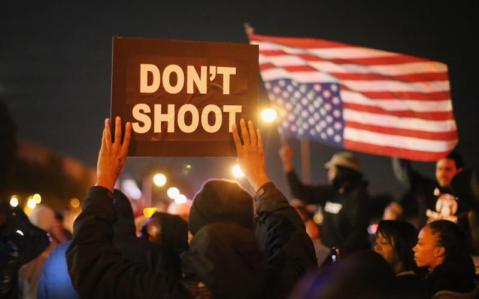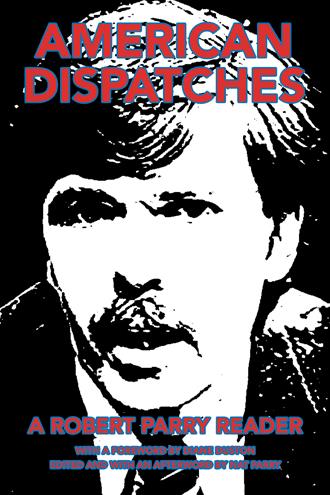Despite its human rights problems at home, U.S. trains police forces abroad

The numbers are in, and it is now confirmed that 2015 was the deadliest year for civilians interacting with police since records have been kept. Of course, this is not saying all that much since last year was the first year in which records were kept in any comprehensive fashion.
Filling a notable gap in record-keeping by the United States government, which doesn’t bother to gather data on how many civilians are slain by police in a given year, news organizations including The Washington Post and The Guardian last year determined that between 965 and 1,134 civilians were killed by police, depending on what counting standards are used. (The Washington Post only tracked fatal police shootings, not killings by other forms of force, while the Guardian employed a more comprehensive methodology.)
While much of the focus of the police deaths has been on the racial component of the nationwide police brutality epidemic, fueled in large part by the agenda of the Black Lives Matter movement and the media’s tendency to devote more attention to cases following an easily digestible racial narrative, the numbers confirm in fact that the rampant police violence impacts communities of all colors and creeds across the United States.
Indeed, despite the disproportionate attention paid to cases involving a white cop and black victim, more whites were killed by police than any other race in 2015. According to the Guardian’s tally, the total numbers of police victims are as follows:
- 577 White
- 300 Black
- 193 Hispanic/Latino
- 27 Other/Unknown
- 24 Asian/Pacific Islander
- 13 Native American
Of course, while the raw numbers appear to demonstrate an equal-opportunity problem that cuts across racial lines, when analyzed a bit more closely, it is clear that in fact the tendency of police to kill civilians is a much greater threat to African Americans than it is to any other group. Nearly seven out of a million black people were killed by police in America last year, while white victims accounted for 2.86 per million. In other words, African Americans were nearly 2.5 times as likely to be killed by police as their white counterparts.
Age and gender also play a factor in being killed by police, with young black men being nine times more likely than other Americans to die at the hands of a cop in 2015, according to the Guardian study. As the UK-based paper further explained:
Despite making up only 2% of the total US population, African American males between the ages of 15 and 34 comprised more than 15% of all deaths logged this year by an ongoing investigation into the use of deadly force by police. Their rate of police-involved deaths was five times higher than for white men of the same age.
Paired with official government mortality data, this new finding indicates that about one in every 65 deaths of a young African American man in the US is a killing by police.
But even setting aside the racial factor, it is clear that far too many people of all races and ages are killed by their police forces in America, a trend of police brutality not seen in other “advanced democracies.” Even looking at just the white victims of police violence, the U.S. is in a league of its own. According to the Guardian,
[L]ooking at our data for the US against admittedly less reliable information on police killings elsewhere paints a dramatic portrait, and one that resonates with protests that have gone global since a killing last year in Ferguson, Missouri: the US is not just some outlier in terms of police violence when compared with countries of similar economic and political standing.
America is the outlier – and this is what a crisis looks like.
The Independent, another British paper, illustrated the issue this way:

Taking a broad view of the situation, it seems clear that the problem is deeper than just a matter of racial discrimination, and in fact reflects a fundamental lack of respect for human life by U.S. police, regardless of race.
Take for example the recent case of a white drunk driver who was gunned down by a cop after having flipped his vehicle in Paradise, California. The driver attempted to crawl out of the car after surviving the accident, only to be inexplicably shot by a police officer on the scene for no apparent reason.
In that particular case, the police officer claimed that his firearm went off by “accident” but anyone watching the video can see that all indications point to an intentional shooting. This would fit in a pattern of senseless police violence that was described in a report issued last year by Amnesty International as a possible violation of international norms.
The report, “Deadly Force,” pointed out:
The use of lethal force by law enforcement officers raises serious human rights concerns, including in regard to the right to life, the right to security of the person, the right to freedom from discrimination and the right to equal protection of the law. The United States has a legal obligation to respect, protect and fulfill these human rights and has ratified the International Covenant on Civil and Political Rights and the International Convention on the Elimination of All Forms of Racial Discrimination, which explicitly protects these rights.
One of a state’s most fundamental duties which police officers, as agents of the state, must comply with in carrying out their law enforcement duties, is to protect life. In pursuing ordinary law enforcement operations, using force that may cost the life of a person cannot be justified. International law only allows police officers to use lethal force as a last resort in order to protect themselves or others from death or serious injury. The United Nations (UN) Basic Principles on the Use of Force and Firearms provide that law enforcement officials shall not use firearms against persons except in self-defence or the defence of others against the imminent threat of death or serious injury, and that, in any event, “intentional lethal use of firearms may only be made when strictly unavoidable in order to protect life.”
Furthermore, international law enforcement standards require that force of any kind may be used only when there are no other means available that are likely to achieve the legitimate objective. If the force is unavoidable it must be no more than is necessary and proportionate to achieve the objective, and law enforcement must use it in a manner designed to minimise damage or injury, must respect and preserve human life and ensure medical aid are provided as soon as possible to those injured or affected.
The problem of police violence also caught the attention of the United Nations last year. At the U.S.’s Universal Periodic Review for compliance on human rights norms at the United Nations Human Rights Council in May, the United States heard criticism of its policies ranging from Guantanamo to the death penalty to police brutality.
The representative from Nambia, for example, said U.S. officials must “collaborate closely with marginalized communities to fix the broken justice system that continues to discriminate against them, despite recent waves of protest over racial profiling and police killings of unarmed black men.”
“Chad considers the United States of America to be a country of freedom, but recent events targeting black sectors of society have tarnished its image,” said Awada Angui, the delegate from that country.
The barrage of criticism led James Cadogan, senior counselor in the Department of Justice’s Civil Rights Division, to concede that the United States has a problem with police violence.
“We must rededicate ourselves to ensuring that our civil rights laws live up to their promise,” he said at the review. “The tragic deaths of Freddie Gray in Baltimore, Michael Brown in Missouri, Eric Garner in New York, Tamir Rice in Ohio, and Walter Scott in South Carolina have… challenged us to do better and to work harder for progress.”
The review “was a demonstration of the no confidence vote that world opinion has made of the United States as a country that considers itself a human rights champion,” said Jamil Dakwar, director of the Human Rights Program of the American Civil Liberties Union. “I think that there was a clear message from today’s review that the United States needs to do much more to protect human rights and to bring its laws and policies in line with human rights standards.”
Yet, despite its wholesale violations of international norms on policing at home, the United States is currently engaging in international training programs of police in other countries, which can only be seen as a potential disaster for human rights.
A June 10, 2015 post on the US Department of State’s official blog revealed that the Department of Justice and Bureau of International Narcotics and Law Enforcement Affairs (INL) are running a police training program in Kiev, Ukraine. The program has trained at least 100 Ukrainian police instructors to oversee a new 2,000-member patrol unit as part of a broader effort to “fundamentally change the relationship between law enforcement and the citizens of Ukraine.”
The blog post noted that the police trainers – hailing from Nevada, California and Ohio – “traveled to Ukraine to teach tactical skills training and mentor the instructors as they train the first new cadets.”
The training program “has been key in advancing our goals in Ukraine and deepening our relationships with the new government,” stated the post.
This relationship, of course, stems from a violent U.S.-backed coup d’etat that ousted the democratically elected president Viktor Yanukovych in February 2014. Ukraine has been embroiled in civil war ever since.
Besides the self-serving geopolitical nature of the police training program, what is astounding about it is that the U.S. feels that it is in any position to train any country’s police. Indeed, considering the widespread epidemic of police brutality in the United States, it is clear that U.S. police need training before they go training other countries’ police forces.
The practice of U.S. international police trainings has long caught the attention of human rights groups, including Amnesty International.
Amnesty notes that the United States government trains at least 100,000 foreign soldiers and police from more than 150 countries each year at a cost of tens of millions of dollars, but “the vast majority of U.S.-administered training courses do not include specific instruction in the human rights or humanitarian law obligations that soldiers must obey.”
Unfortunately, according to Amnesty, “many of the government forces the U.S. has trained have poor human rights records.”
The human rights group points out that it is “vital that the U.S. military mainstream human rights and humanitarian law into all foreign military and police training. Such instruction should be mandatory for all U.S. and foreign trainees attending courses, and it should be reinforced through operational exercises.”

